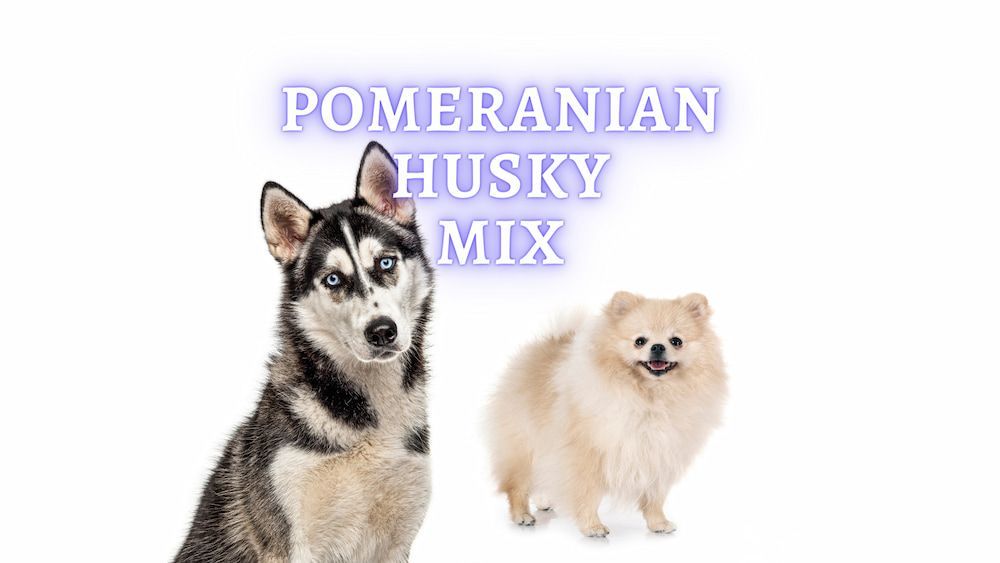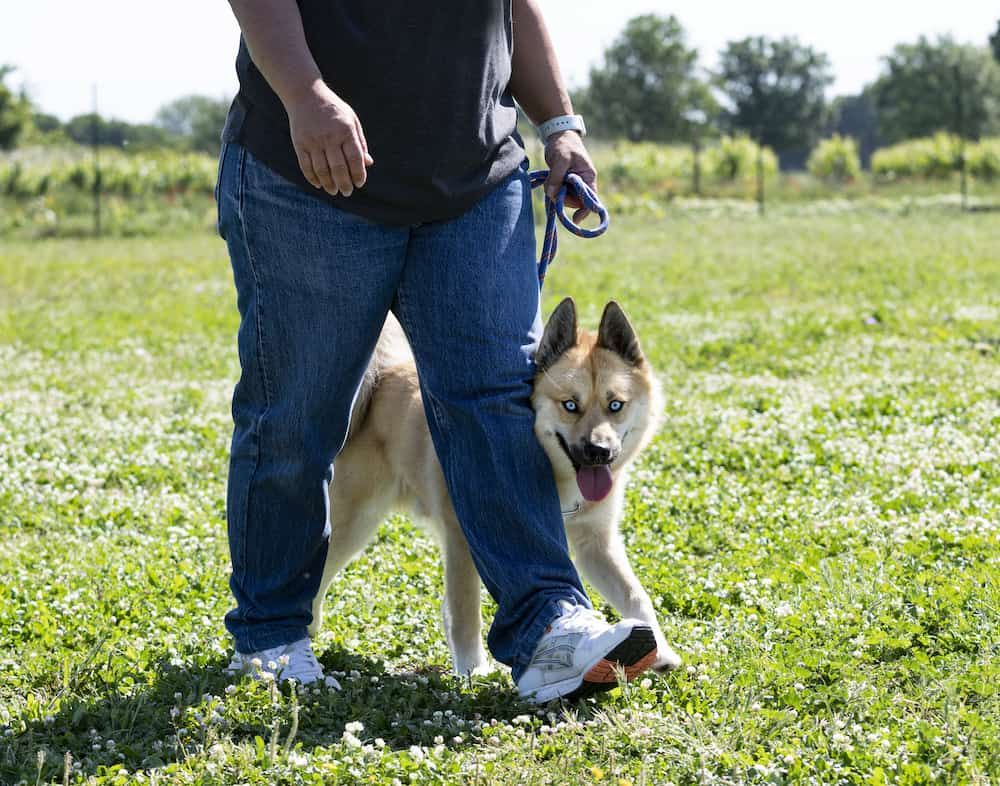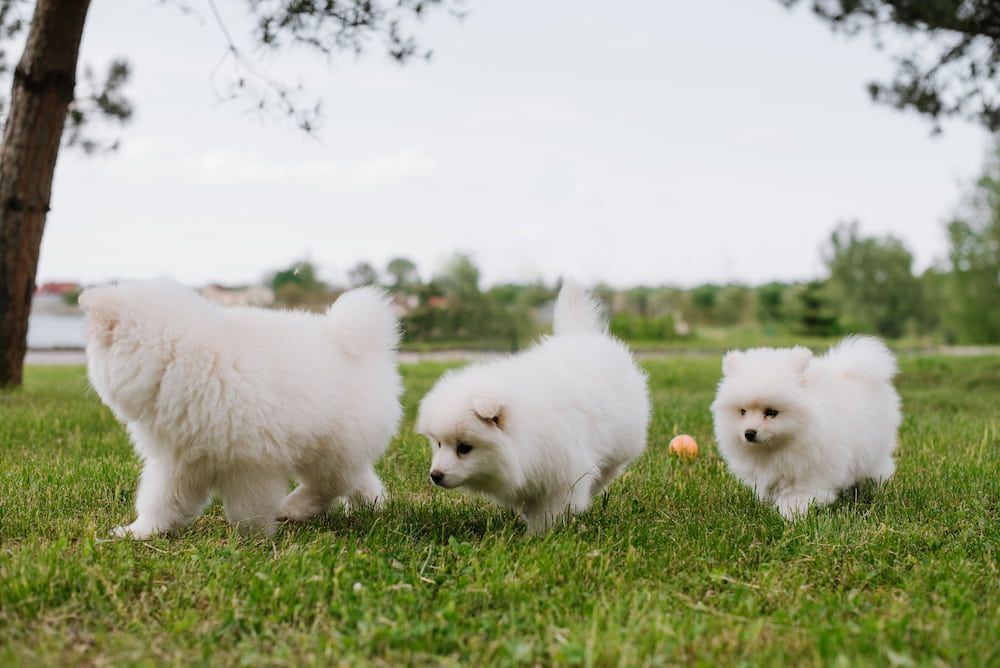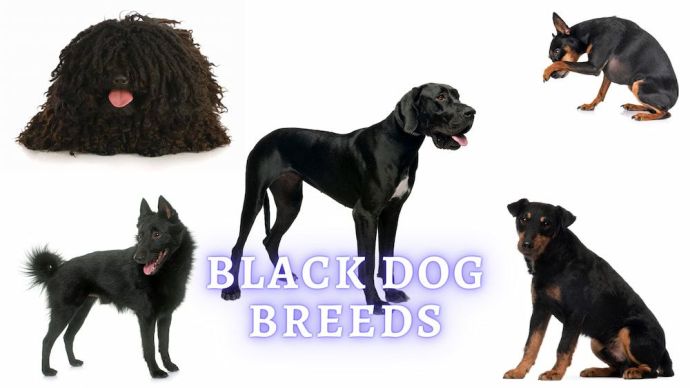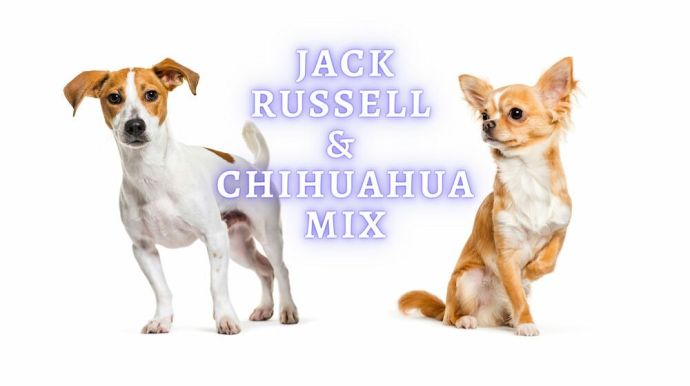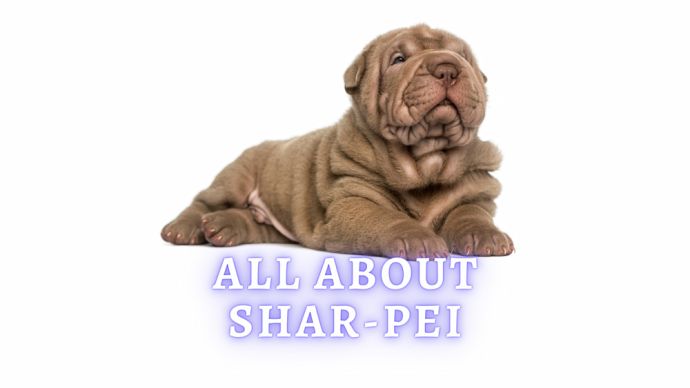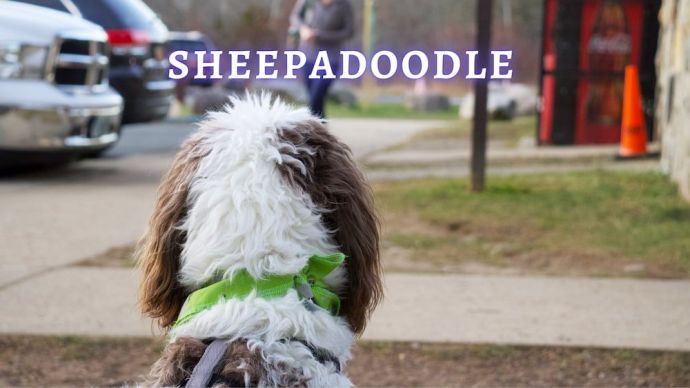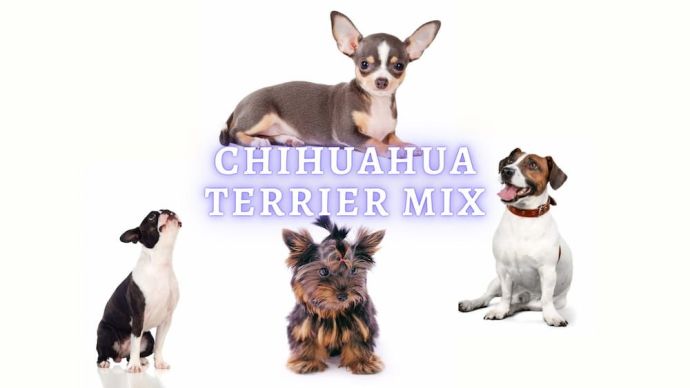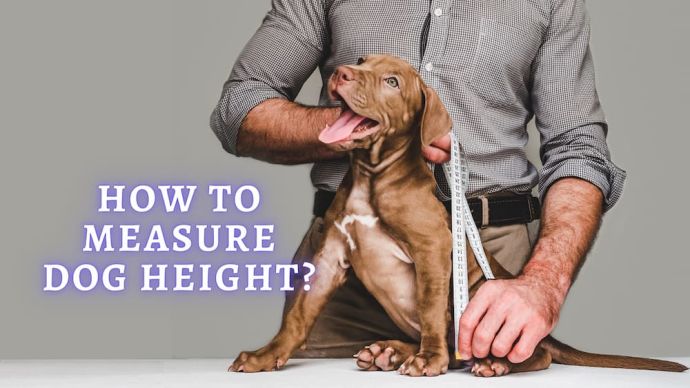Pomeranian Husky: All About The Pomsky Mix Breed
Written by:
Author: Seb Jenkins
Seb is a professional SEO writer with a degree in Journalism, he has five years of experience in writing and editing. Seb specializes in topics like dog and cat breeds, aquarium guides, and pet care. He is passionate about educating and entertaining animal owners worldwide. In his spare time, Seb enjoys writing fiction novels.
View all 83 articlesLearn about our editorial process and veterinary review board.
Viewed: 119
Updated on: 06/08/2023
The Pomeranian Husky mix breed has to be a strong contender for the cutest cross out there in the wide world of dogs. Also referred to as the Pomsky, they are actually designer dogs and as hybrid dog breeds go, they haven’t been on the scene for all that long. Of course, a combination of the cute size and stature of the Pomeranian and the beautiful wildness of the Husky was always going to be a hit with dog lovers around the world.
If you want a dog to fall in love with, play fetch with, cuddle on the sofa, and don’t mind an expensive dog, the Pomsky could be a great pick. As with any dog, it is always a good idea to research what you are getting yourself in for before inviting the pup into your home. Fortunately for you, we have compiled an all-you-need guide on the Pomeranian Husky mix dog below!
Characteristics
The following are the main characteristics shown by the Pomeranian Husky:
| Height | 10-15 inches |
| Weight | 15-30 pounds |
| Lifespan | 13-15 years |
| Coat | Thick, long, double coat |
| Colors | Black, red, cream, white, brown, blue, orange, merle, tan. |
| Shedding | Yes. |
| Temperament | Loyal, loving, playful and energetic. |
| Intelligence | High intelligence but stubborn. |
| Social skills | Very good with people, distant with strangers. |
| Destructive | Loves to dig and howl. |
| People skills | The perfect companion for first-time owners. |
| Children | Can be nervous with kids. |
| Energy levels | Needs room to run around and lots of exercises. |
Breed History
The first whispers of a Pomeranian Husky cross breed started back in 2009 when a woman announced on the internet that she was adopting a mix between the two from a shelter. However, a vet quickly popped up to invalidate the claim of the dog being a Pomsky. This led to a viral trend of people posting photos of their dogs, claiming them to be Pomeranian Husky cross breeds. Yet, up until 2012, the mix remained a myth.
Mainly due to the popularity of the idea of a Pomeranian Husky mix, as evidenced by the viral trend, the Pomsky dream soon became a reality. In 2012, the first known Pomsky litter was born, with Tressa Peterson and Joline Phillips spending a year researching the idea before commencing breeding.
Although they are not recognized by the American Kennel Club as an official breed, as they have only been around for a decade or so, a purebred Pomsky is defined as a cross between a female Siberian Husky and a male Pomeranian. As the Pomeranian is much smaller than the Husky, this kind of breeding often involves artificial insemination. Even though it is not recognized by the AKC, and perhaps never will be, other relevant groups exist, including The Pomsky Club of America and the International Pomsky Association.
We should also take a look at a brief history of the two parents involved. The Siberian Husky arrived in the US back at the start of the 1900s and was primarily used as sled dog in Alaska. As with most Husky mixes, you can definitely see the parent in the child when it comes to this designer dog breed. The Pomeranian, one of the most adored toy dogs in the world, comes from Germany and are known for being very playful and lively. Their ancestors came from Iceland but eventually ended up in Pomerania and have been bred as loyal pets ever since – even becoming popular among royalty.
Interesting Facts
- The Pomsky has been around for no more than a decade.
- Pomeranians and Huskies can’t really breed naturally due to their size difference, which is why artificial insemination is used in Pomsky breeding.
READ MORE: Pomeranian and Chihuahua Mix
Temperament and Personality
The Pomsky is a very loyal breed they get from both parents, the Pomeranian and the Siberian Husky. Both have some working dog history, and that shows in the crossbreed.
They will defend your home with all the strength they have, but they should not be generally aggressive as long as you have trained them well. The Pomsky can feel a little threatened by larger dogs, so that is something to keep an eye on.
However, the Pomeranian Husky cross breed also loves attention! Trust us, if you aren’t giving them enough, they will let you know with their barking and howling. The Pomsky has inherited the famous husky bark, which is high-pitched and loud, meaning they may not be the perfect choice if you live close to many other tenants.
The Pomskies are known for their loving and playful personalities, which is why they are known as companion dogs and said to be perfect for first-time owners. They are equally at home snuggled up on the couch with you for movie night or playing fetch in the garden. The chances are, they will follow you around the house from room to room.
However, even though the Pomsky is a pretty small dog, they can be difficult to live with if you don’t train them properly. This crossbreed definitely has a stubborn streak, so it’s best to get them trained well and trained early.
The Pomeranian Husky can be a little aloof with strangers, so don’t be surprised if they don’t seem interested in new people you bring around the home. They are very clever, confident, and energetic dogs and are not afraid to be affectionate with the ones they love.
| Category | Rating (out of 5) |
| Adaptability | 3 |
| Adapts to apartment living | 5 |
| Energy levels | 4 |
| Adapts to being alone | 1 |
| Tolerates cold weather | 5 |
| Tolerates hot weather | 3 |
| All-around friendliness | 3 |
| Affectionate with family | 5 |
| Kid-friendly | 2 |
| Dog friendly | 3 |
| Friendly with strangers | 3 |
| Health and grooming | 3 |
| Shedding | 4 |
| Drooling | 1 |
| Easy to groom | 2 |
| Easy to train | 3 |
| Exercise needs | 3 |
| Intelligence | 4 |
Activity and Exercise Requirements
The Pomeranian Husky has a lot of energy to burn off and loves exercise. Even if you have a big yard to run around in and give them plenty of playtimes daily, they still need some structured exercise. The best form of exercise is the dog walk – giving them a chance to build muscle, maintain health, and have fun.
We recommend that your Pomsky should be given between 45 and 60 minutes of structured exercise daily. The best way to do this is via two separate walks, with some extra playtime in between if they still have lots of energy.
In terms of mixing things up and keeping things fun for your Pomeranian Husky, taking them to the dog park can be an excellent opportunity to socialize with other dogs. You can also take them swimming for extra exercise. Of course, if you have children, playing games in the backyard can be a great way for the dog to burn off energy… and the children, for that matter.
Feeding and Diet
Husky Pomeranians are energetic dogs, so you should be feeding them between half a cup and just over a cup per day. The exact amount depends on the size of your dog, how much exercise they get, whether they have any health concerns, their gender, and more. If you are unsure of the exact amount, keep an eye on their eating habits and ask your vet for advice.
For Pomskies, the best food to go for is high-quality protein-based dog food, preferably with low saturated fat and low carbohydrates. If your Pomeranian Husky is still a puppy, then healthy fats and protein are very important for growth.
Keep an eye on your dog’s weight, as overfeeding can lead to joint issues and other problems relating to their health. Ensure they get lots of exercises, maintain consistent mealtimes, and avoid giving them too many treats.
As with any dog, your Pomeranian Husky’s diet will change as it grows from a puppy into an adult and then into old age. It is always a good idea to ask your vet about your specific Pomsky during your next check-up. Ask them for recommendations as there can be a huge amount of variation from dog to dog.
Grooming and Shedding
One warning we must give you is that the Pomsky grooming regime can be tough, so if you do not want a dog that needs grooming every day, you may want to rethink. Not only do you need to keep on top of the daily grooming, but we recommend the odd trip to a professional from time to time too.
The long, thick, double coat loves to shed, so brushing is the biggest part of the Pomsky routine. At the start of Spring and Fall, your Husky Pomeranian’s coat will start to shed more than usual, which is when daily brushing is definitely needed.
We recommend developing a routine with your Pomsky from an early age to get all of their grooming and health check-ups done in one go. The quicker they get used to this, the easier it will be for you.
Start by examining and cleaning the ears of your Pomeranian Husky, which should be done once every two weeks. You don’t want any dirt, pests, or hair to clog up their ears and cause an infection.
Once every four weeks or so, you should also trim your Pomsky’s nails. Even though natural playtime and walks will wear down the nails, extra cutting is often needed. You can always pay for a groomer or vet if you are not confident with this process.
We recommend that you brush your dog’s teeth once per day, for all the same reasons we humans do it. There is a market designed for dogs and special toothbrushes on the market.
RELATED: Pomsky Dog Care and Training Course
Known Health Problems
It always helps to be aware of the common health problems surrounding a breed you are about to welcome into your home, so you know what to expect and what to look out for.
Two of the most common issues with Pomeranian Husky cross breeds are dislocated patella and hip dysplasia. The former is common in the Pomeranian and the latter is common in larger dogs like the Siberian Husky. As such, Pomsky is at risk of both problems from each parent. These problems often don’t show themselves until Pomeranian Husky is an adult.
The tell-tale signs of hip dysplasia are a dog limping, showing signs of pain, and/or favoring one particular leg. If you notice any of these things, book an appointment with your vet as soon as possible.
Pomeranian Huskies can also suffer from cataracts, dermatitis, and many other treatable skin and eye conditions. As long as you notice them early, there should be no problems. Cataracts often cause cloudiness to the eyes, causing incoordination, while dermatitis can lead to lots of itching and scratching.
Training
Although they are said to be suitable for first-time owners, the Pomsky can be frustrating to train. They are very clever but also very stubborn at times.
This requires a very firm owner who does not let training slip. They will not learn new commands of behaviors unless you teach them and maintain that training. Get the whole family involved in this process so everyone is on the same page.
The Pomeranian Husky can be very loud and disobedient at first, and they may get cross at your attempts to train them. This is often referred to as “little dog syndrome”. However, it can be trained out of them.
Use positive reinforcement to your advantage. Pomskies are a lot less stubborn when they think they might get a treat as a reward for following your commands.
However, training should not be restricted to basic commands. You also need to socially train your dog so they are comfortable around people and other animals. If you fail to do this, they may become territorial and overly protective over you. In short, you want to teach this Pomeranian and husky cross good animal behavior.
Social training is always best from day one when they are still puppies. Use rewards to incentivize good behavior during training. Potty training, obedience training, leash manners, and agility training should also be completed.
Adoption
Pomskies are a new and designer breed, and finding them in rescue centers can often be tricky. We always recommend giving a shelter animal home before looking into adopting a Pomsky puppy. However, it may be difficult if you have your heart set on a Pomeranian Husky, especially a puppy.
READ MORE: Husky Corgi Mix
Breeders
The most direct route to sourcing a Husky Pomeranian is via a breeder. This is especially the case if you have your heart set on a puppy. Pomskies are bred using Siberian Husky and Pomeranian parents and there are a number of experienced breeders out there who provide regular litters. However, we urge you to check your local adoptions and rescue centers first to see if you can give a home to a lovely Pomeranian Husky. Of course, that is your choice.
To find the best breeder for Pomsky puppies, we recommend that you research online for your local options. There should be reviews for each breeder to see who has a good reputation and who should be avoided.
Conclusion
And there we have it, our complete guide to the Pomeranian Husky mix. This should give you all the starter information you need to confidently make a decision on whether you want to adopt or purchase a Pomsky. Feel free to refer back as you welcome the new dog into your home for tips on training, health, exercise and more. We wish you all the best with your new best friend!
FAQs
How much is a Husky Pomeranian?
On average, a Husky Pomeranian, or Pomsky, costs between $2,000 and $3,000.
Do Pomeranian Huskies stay small?
Like with any breed of dog, the size of a Pomsky varies from dog to dog. However, on average, they stand at 10-15 inches and weigh 15-30 pounds, so they are small dogs.
How big do Pomeranian Huskies get?
Your Pomeranian Husky should be between 10-15 inches in height and weigh in at 15-30 pounds.
Are Pomeranian Husky mixes real?
They may have started as a fake internet trend, but the Pomsky has very much been real since around 2012, when breeding began.
Are Pomskies loud?
Pomskies can be loud with their barking and howling, especially when they want attention, so they are not recommended for people who want or need a quiet dog.
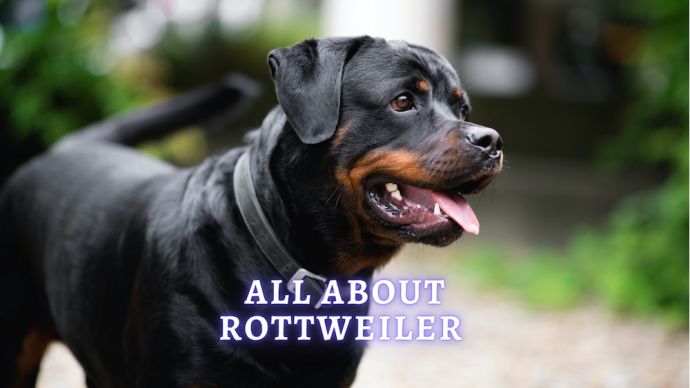 Dog Breeds Rottweiler: Rottweiler Dog Breed History, Personality and Health Care
Dog Breeds Rottweiler: Rottweiler Dog Breed History, Personality and Health Care - 40
- 0
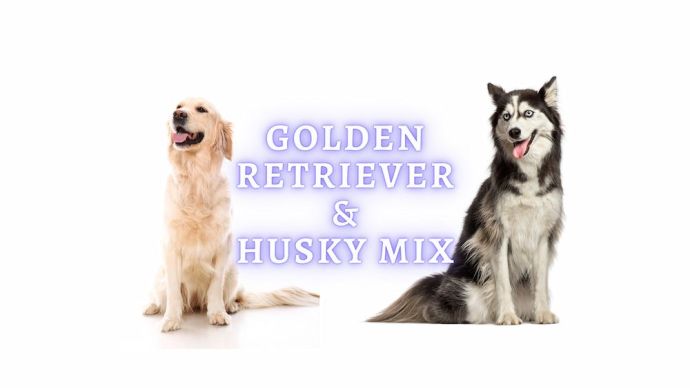 Dog Breeds Golden Retriever Husky Mix: Goberian Dogs Personality, Care and Adoption
Dog Breeds Golden Retriever Husky Mix: Goberian Dogs Personality, Care and Adoption - 597
- 0
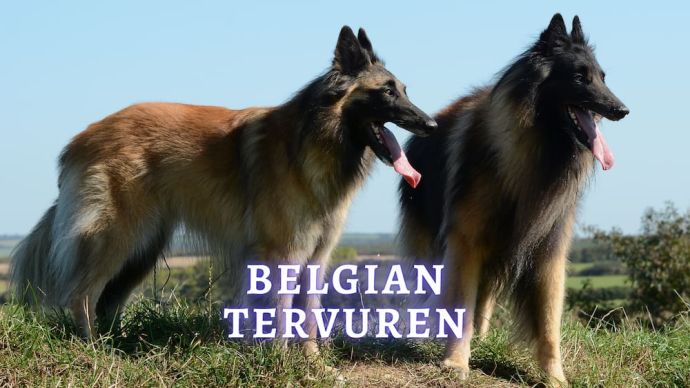 Dog Breeds Belgian Tervuren: Lifespan, Temperament and Trainability of Belgian Tervurens
Dog Breeds Belgian Tervuren: Lifespan, Temperament and Trainability of Belgian Tervurens - 45
- 0
 Dog Veterinary Tips Why is my Dog throwing up: Causes and Preventing (Veterinary Advice)
Dog Veterinary Tips Why is my Dog throwing up: Causes and Preventing (Veterinary Advice) - 21356
- 5
 Dog Care My Dog Keeps Scratching His Mouth: Reasons Why Your Dog Scratching Face
Dog Care My Dog Keeps Scratching His Mouth: Reasons Why Your Dog Scratching Face - 16542
- 1









